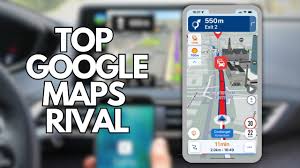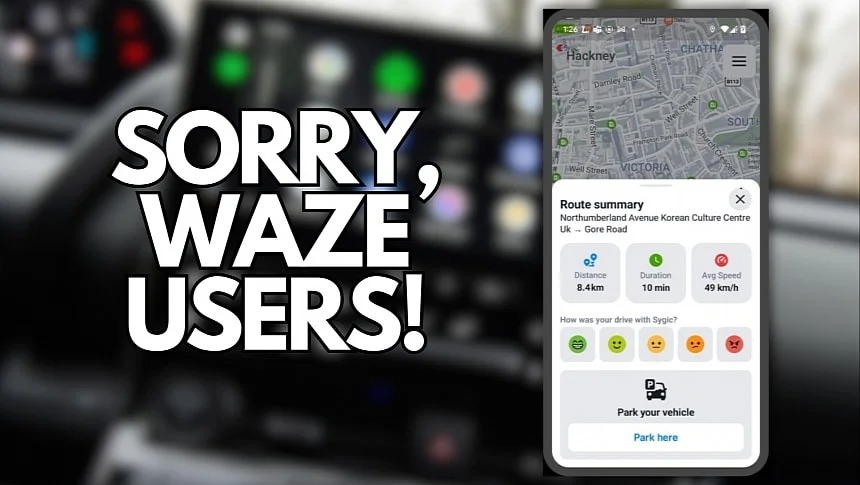Google Maps has long been a dominant player in navigation and mapping, but its competitors are continuously evolving to challenge its features. One such rival has introduced a highly anticipated update that has captivated the attention of users. This new functionality mirrors what Waze, the community-based navigation app owned by Google, has offered for years. It is designed to enhance real-time navigation, increase user interactivity, and improve the overall travel experience.

The rollout of this feature is a significant move in the navigation app market, and it highlights the competitive dynamics among major players. As user expectations for intuitive, real-time, and community-driven mapping services grow, companies are pushing the boundaries of innovation to stay relevant. While the exact nature of the newly introduced feature and its technical specifics are detailed below, its implications extend to how users interact with navigation tools and how companies leverage community data to improve travel experiences.
Understanding the Feature Release
The rival app, seeking to carve out its own space in the market, has incorporated a feature that allows for dynamic reporting of traffic events, accidents, and road closures. This functionality empowers users to contribute to the app’s data pool in real-time, ensuring that other travelers receive up-to-date information on road conditions. By enabling this participatory approach, the app aligns itself with Waze’s philosophy of community engagement, which has been instrumental in its success.
Technical Breakdown of the Feature
The new feature is underpinned by a sophisticated algorithm that integrates user-reported data with official traffic updates. This ensures a seamless blend of community-driven insights and authoritative information. The table below provides a comparison between the functionalities of this new feature and Waze’s existing capabilities:
| Feature Aspect | Google Maps Rival | Waze |
|---|---|---|
| User-Reported Incidents | Real-Time Updates | Real-Time Updates |
| Integration with Official Data | Yes | Yes |
| Gamification of Reporting | Limited | Extensive |
| Platform Accessibility | Multilingual and global | Multilingual and global |
Impacts on User Experience
By integrating this functionality, the rival app not only closes the gap with Waze but also introduces subtle improvements tailored to user needs. For example, the app may offer a more simplified interface for reporting incidents, making it accessible to a broader demographic. Additionally, the feature’s integration with AI enables predictive suggestions, such as advising alternate routes even before a user reports an issue.
This innovation reshapes the user experience by creating a more interactive and responsive platform. Users are no longer passive consumers of navigation data but active participants in its creation. This participatory dynamic fosters a sense of community and ensures that the app’s information is as accurate and current as possible.
Competitive Implications
The launch of this feature signals a broader trend in the navigation app market. With Waze having pioneered this model, other companies are recognizing the value of community-driven data. This feature’s introduction challenges Google’s dual dominance with Maps and Waze by presenting users with an alternative that incorporates similar functionalities without the need for two separate apps.
Moreover, this competition drives innovation. As each player seeks to outdo the other, the resulting advancements benefit users. For example, enhancements in data accuracy, interface design, and route optimization stem directly from this rivalry. It is a testament to how competition fuels progress in the tech industry.
The Broader Landscape of Navigation Apps
Navigation apps are no longer just about getting from point A to point B. They have evolved into comprehensive tools that encompass live traffic updates, points of interest, and even social interaction. This feature aligns with the broader trend of turning navigation tools into multifaceted platforms.
The new feature also reflects the increasing reliance on user-generated content in technology. Whether it is reviews, ratings, or traffic updates, modern platforms are leveraging the collective intelligence of their user base. This approach not only enhances functionality but also creates a sense of ownership and community among users.
Future Prospects
As this feature gains traction, it raises questions about the future of navigation apps. Will other players in the market adopt similar strategies? How will Google respond to this challenge? These developments hint at a rapidly changing landscape where user needs and technological capabilities drive constant evolution.
This feature’s release also underscores the importance of user feedback in app development. By listening to what users value in navigation tools—be it real-time updates, ease of use, or integration with other platforms—developers can create solutions that resonate with their audience.
the introduction of this community-driven traffic reporting feature marks a significant milestone in the navigation app industry. It not only enhances the rival app’s appeal but also sets a precedent for others to follow. As these tools become more interactive and user-centric, they redefine what it means to navigate in the modern world. Whether you are a daily commuter or an occasional traveler, these advancements promise a more informed, efficient, and engaging journey.










Add Comment